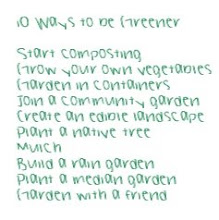
My inaugural experience creating a t-shirt quilt has been mostly trial and error, with more emphasis on the error. Thank goodness for my seam ripper!
If you are also crazy enough to think this would be a fun gift to make, please read on. Otherwise, I hope you will enjoy other entries on this blog that have absolutely nothing to do with cutting out 30+ t-shirts as a first step.
I started with 35 of my gift recipient's thoughtfully selected, favorite t-shirts from her extensive collection. Looking at the size and shape of the graphics, I decided to cut each square 14 1/2 inches. I started cutting them with a pair of scissors. (A smarter person would have used a rotary cutter on a self-healing cutting mat.) Then I created and recreated layouts on the floor until I was quite tired, but satisfied with the balance of colors.
I documented it with a few digital images and waited for approval from the recipient. Immediately, she signaled back with the green light on the layout. Next, I started cutting out 14 1/2 inch squares of soft, light-weight fusible interfacing for the backing of the cut tees. (This prevents each t-shirt square from stretching out as you assemble the quilt.)
Using my vintage
Singer, I started attaching the squares in rows, with a uniform seam allowance. All seams were pressed open. When the rows were completed, I attached each to the next and pressed the seams again.
Using two lengths of 45" wide fabric selected for the quilt project, I created a backing piece that was intentionally larger all around than the finished t-shirt quilt top. For a neat appearance on the back, I centered the width of the backing fabric and pieced two half widths on either side of the centered fabric to create the overall dimensions needed. I knew enough to avoid a seam down the middle.
Starting from the bottom I created a quilt sandwich, with the backing, right side down, then the batting on that and the quilt top, placed right-side-up and centered. I hand basted around the outside edges to hold all three layers in place. Then, I trimmed the excess batting beyond the edge of the t-shirt quilt top and trimmed the backing (bottom) layer to allow a 2 inch overlay all around.
Working along each edge, I wrapped the two inch overlay of the backing fabric onto the top of the quilt, folded it under twice, pinned and pressed as a 1/2 inch binding. Lastly, I carefully topstitched the self-binding around each side of the quilt. Voilà!

Sweet dreams and happy graduation Coco!
 Eco-think, Do it yourself, Live green, Go sustainable, Reduce your footprint, etc.
Eco-think, Do it yourself, Live green, Go sustainable, Reduce your footprint, etc.

